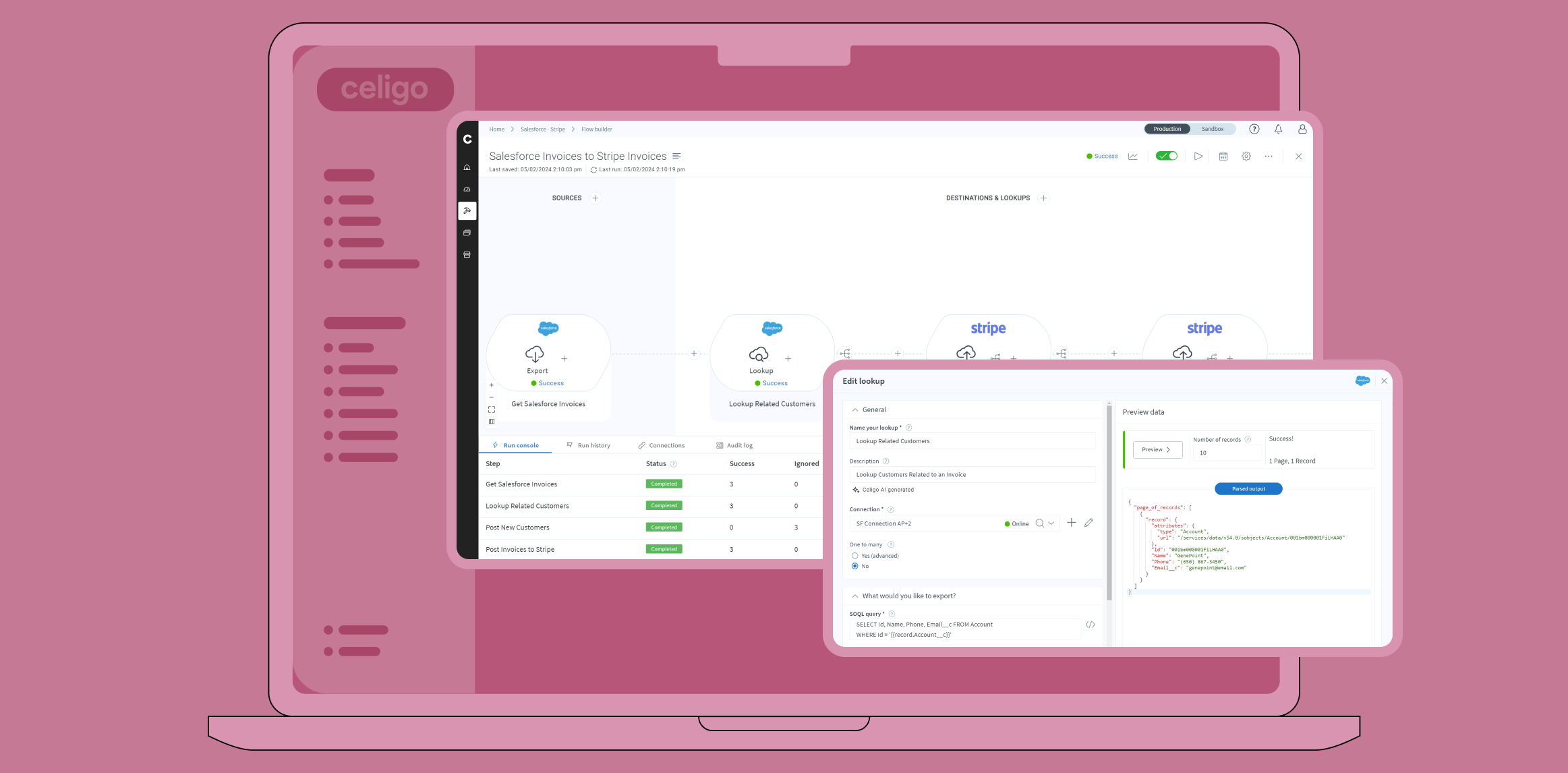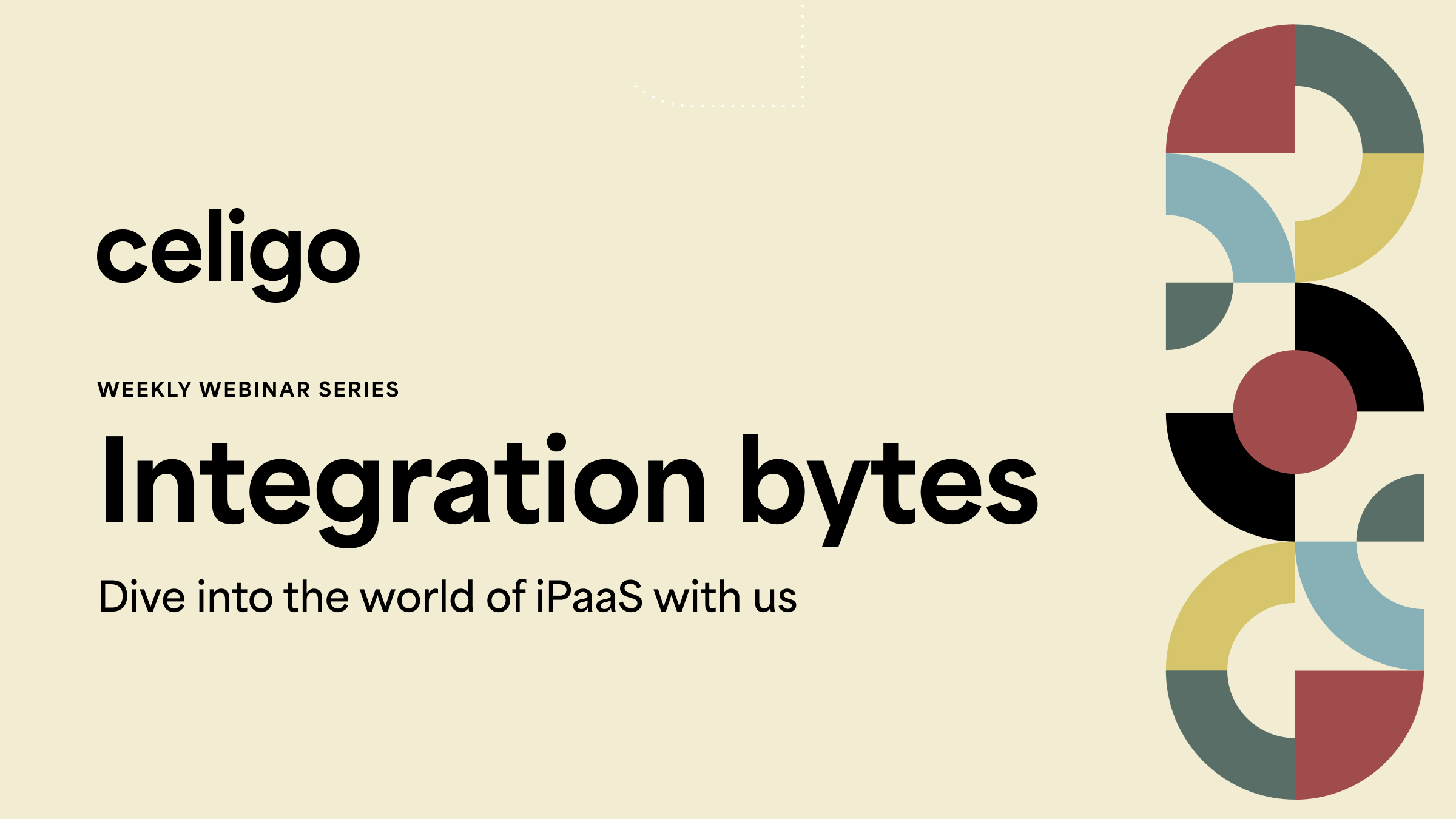Published Feb 2, 2024
The basics of API integration

Businesses today require countless intricate systems to work together in perfect harmony. When applications aren’t integrated, it becomes impossible to use either application to its full potential. This is where API integration comes in. API integration helps your business automate workflows, enhance data consistency, and foster innovation. An iPaaS (Integration Platforms as a Service) like Celigo is a powerful tool for creating API integrations that can revolutionize your business and its capabilities. To understand how, let’s explore the basics of API integration and how they fit into your workflows.
Understanding API integration
What is API integration?
Before we further discuss API integrations, we should define what an API is, as it is the base of API integration. API stands for application programming interface. Without getting too technical, APIs are what allow different pieces of software to interact with each other. In a way, the API acts as a messenger that tells a system what action or information you’d like and then brings that response back to you. If an API is the messenger by which different applications exchange data, then API integration essentially acts as the road that data travels on.
An API integration allows businesses to connect multiple applications so they can quickly and automatically share data. This interaction requires no manual data sharing and no human interaction. The main reason businesses use API integrations is to expand the interconnectivity of their business and create teams that can act quickly on accurate data. Before our current digital age, data was shared by fax, or written on paper and walked down the hallway. API integrations remove these steps and allow the applications to speak to each other directly.
How API integration works
With a basic understanding of what API integration is we can explore some examples of how these connections work.
First, one of the most common uses of API integration is to connect your sales team to your marketing teams. A sales team requires new leads to help expand the business, and it’s often these leads are generated by campaigns the marketing team is running. However, the sales team and marketing team may not be connected, which means it’s possible to miss when new leads come in. With API integration, you can connect your CRM (customer relationship management) platform to your business communication platform. For example, connecting HubSpot to Slack through API integration allows the sales team to stay on top of incoming leads from marketing efforts.
Second, API integrations allow for quick file transfer and storage. Hiring new team members can be time-consuming and requires a lot of back and forth. However, by creating an API integration between an ATS and a document management system this process can be automated and streamlined. Once the perfect candidate has been found an offer letter is drafted, sent to them to be signed, sent back, and then filed away. This process is handled by one or several people in HR. With an API integration, this process becomes trivial. By updating the status of an applicant in the ATS to “hired” the API integration triggers a workflow that automatically creates and sends the offer letter to the candidate. Once the candidate accepts and signs the offer letter, that workflow automatically files the offer letter in the ATS and updates the status to “accepted.” What was once a process requiring several touchpoints, has been streamlined and automated through the use of an API integration.
Types of API integrations
As you wade into the world of API integration, it’s important to know what kinds of options you’ll be given. APIs can be integrated in many different ways. Understanding the difference between types of API integrations is key to comprehending what you’re looking at and how it will fit into your overall workflows.
Common types of API integrations
- REST APIs (Representational State Transfer): REST APIs, also known as RESTful APIs, are APIs that allow two computer systems to transfer data securely over the internet. Their simplicity has made them some of the most common types of API for web services, and they are used almost entirely for internet-based services. For example, REST API can be used for paying customers and sending invoices. To generate an invoice, your internal accounts system needs to contact your client’s bank system. Because these two systems are not on the same network, this communication and transfer is done over the internet with a REST API. REST APIs are best suited for businesses that work with various cloud services and external systems.
- SOAP APIs (Simple Object Access Protocol): SOAP APIs are another way APIs use HTTP to send and receive data and processes. However, SOAP APIs are much more rigid in their structure compared to REST APIs. For example, SOAP APIs can only transfer data over the XML format and are larger, so they may take longer to transfer. The rigidity of SOAP APIs makes them more secure than other protocols. This makes them ideal for use with banking, medical, and billing services. SOAP APIs prioritize transactional reliability and security.
- GraphQL APIs: GraphQL APIs are a data transfer standard that allows the client requesting data from another system to only receive the exact data they requested and nothing more. Minimizing the amount of data being transferred between systems allows GraphQL APIs to be much more efficient when compared to other API integrations. Their high level of data customization makes them most useful for complex systems with many related objects. This includes mobile applications and systems with extensive databases.
- Webhooks: Webhooks are a relatively simple API integration compared to others on this list. However, this doesn’t mean they’re any less useful. Webhooks are typically used to send automated messages from an app after a specific event. For example, a lead populates, and then a message is sent in the sales team Slack to notify them. These are most useful for real-time updates and for data to easily be posted between web applications.
How to implement API integration
The last step to understanding the basics of API integration is to understand how these integrations can be implemented into your business workflows. If you are considering implementing API integration, here are a few steps that can help you get started.
- Identify integration needs: The first step is to understand your integration needs. Knowing what data and processes need to have automated integrations will help narrow down which applications should be prioritized. If you approach API integration from the idea that “everything needs to be connected,” you may end up with integrations that aren’t helpful. Focusing on what information and processes are being used will help determine how different applications interact with each other and remove any pain points the teams face when interfacing with both.
- Find the right tools: Now that you’ve determined which processes and information you’d like to integrate, you can begin searching for the best integration platform. The platform you choose must be compatible with the applications and data you use, as well as be able to expand in the future as your needs grow. Celigo, for example, is easily scalable and integrates with over 200 SaaS applications.
- Implementation: It’s one thing for the tool to do what you want, but is it easy to set up? What kind of support does it have? These are important questions when determining which iPaaS to move forward with. Make sure you find a system that will be implemented quickly and easily and has extensive support in case anything goes wrong while using it
- Testing and deployment: Once you’ve determined your needs, found a platform, and determined its implementation process, you can test and deploy the program. Any system you use should be heavily tested before rolling out officially. This ensures the system will fit your needs, and that it’s something that creates value for you and your teams. After the testing is done, all that’s left to do is roll it out.
Benefits of API integration
Now that we know what API integration is, what types are available, and how to implement them, let’s dive into the benefits your business may see after implementing these processes. API integration allows businesses to expand and grow in ways they may not have even realized. The small inefficiencies caused by systems not working together perfectly can go unnoticed. However, once you enter the world of API integration and iPaaS, you’ll begin to wonder why you ever accepted less than perfect.
- Automation: Through API integration via an iPaaS, businesses can automate complex and repetitive workflows. This leads to a reduction in manual tasks, enhancing accuracy and productivity, and streamlining processes across various departments.
- Scalability: A universal truth of business is that as you grow, your processes and systems become increasingly more complex. Luckily, API integration offers a solution to these growing pains. You can easily and continuously add new systems to your platform of choice. Your business can keep growing without worrying about disrupting workflows.
- Error reduction: Relying entirely on team members to manually enter and transfer data is bound to lead to errors. API integration removes these risks as data entry and transfer are all handled automatically. This allows for accurate and consistent flow of data between systems.
- Real-Time Data Access and Synchronization: API integration through iPaaS enables real-time data exchange. This means that changes in one system are immediately reflected in others, ensuring that all departments have access to the most current information, which is crucial for timely decision-making and responsive customer service.
- Enhanced Application Connectivity: An iPaaS facilitates seamless connectivity between various software applications, whether hosted on the cloud or on-premises. This integration ensures efficient data flow across different business systems, improving overall operational effectiveness.
- Improved customer experience: Not only will an API integration help your teams work more efficiently and allow them to better prioritize tasks, but it will also help your customer-facing systems as well. Any system your customer interacts with should just work. Additionally, as your customers interface with your applications or your teams, they will expect a unified experience. This is only possible when the many systems they interact with are integrated into a single source of truth. The right API integrations can help improve your customer experience across many platforms.
- Reduced IT Complexity and Cost: Implementing API integrations through an iPaaS can significantly reduce the complexity and cost associated with traditional integration methods. It minimizes the need for custom coding and extensive IT involvement, allowing for quicker deployment and lower maintenance costs.
- Robust Security and Compliance: iPaaS platforms incorporate strong security measures. They assist in ensuring that API integrations adhere to various data protection and privacy regulations, maintaining high standards of data security.
API integration is an incredible tool that can change and optimize your business in countless ways. It improves efficiency, scalability, and automation, just to name a few. These benefits allow API integration to drive better innovation overall for your business. Choosing the right iPaaS, and API integration is key to ensuring the long-term operation of your business. Celigo is among the best in this field and can help you find tailored integration solutions to fit your needs. Contact us today to get a free demo from Celigo and see how we can revolutionize how your business operates.




